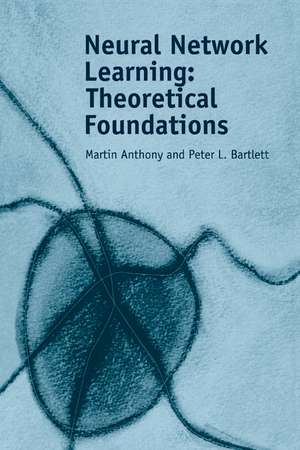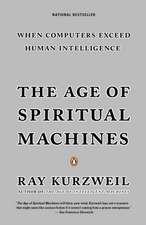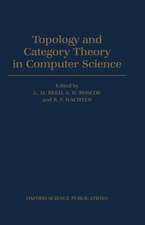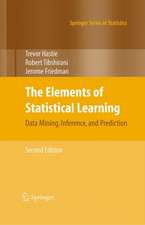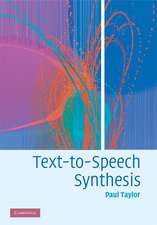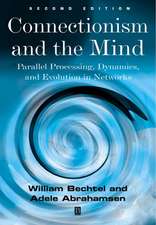Neural Network Learning: Theoretical Foundations
Autor Martin Anthony, Peter L. Bartletten Limba Engleză Paperback – 19 aug 2009
| Toate formatele și edițiile | Preț | Express |
|---|---|---|
| Paperback (1) | 369.66 lei 6-8 săpt. | |
| Cambridge University Press – 19 aug 2009 | 369.66 lei 6-8 săpt. | |
| Hardback (1) | 828.31 lei 6-8 săpt. | |
| Cambridge University Press – 3 noi 1999 | 828.31 lei 6-8 săpt. |
Preț: 369.66 lei
Preț vechi: 462.07 lei
-20% Nou
Puncte Express: 554
Preț estimativ în valută:
70.74€ • 73.41$ • 59.13£
70.74€ • 73.41$ • 59.13£
Carte tipărită la comandă
Livrare economică 17-31 martie
Preluare comenzi: 021 569.72.76
Specificații
ISBN-13: 9780521118620
ISBN-10: 052111862X
Pagini: 404
Dimensiuni: 152 x 229 x 23 mm
Greutate: 0.59 kg
Ediția:New.
Editura: Cambridge University Press
Colecția Cambridge University Press
Locul publicării:Cambridge, United Kingdom
ISBN-10: 052111862X
Pagini: 404
Dimensiuni: 152 x 229 x 23 mm
Greutate: 0.59 kg
Ediția:New.
Editura: Cambridge University Press
Colecția Cambridge University Press
Locul publicării:Cambridge, United Kingdom
Cuprins
1. Introduction; Part I. Pattern Recognition with Binary-output Neural Networks: 2. The pattern recognition problem; 3. The growth function and VC-dimension; 4. General upper bounds on sample complexity; 5. General lower bounds; 6. The VC-dimension of linear threshold networks; 7. Bounding the VC-dimension using geometric techniques; 8. VC-dimension bounds for neural networks; Part II. Pattern Recognition with Real-output Neural Networks: 9. Classification with real values; 10. Covering numbers and uniform convergence; 11. The pseudo-dimension and fat-shattering dimension; 12. Bounding covering numbers with dimensions; 13. The sample complexity of classification learning; 14. The dimensions of neural networks; 15. Model selection; Part III. Learning Real-Valued Functions: 16. Learning classes of real functions; 17. Uniform convergence results for real function classes; 18. Bounding covering numbers; 19. The sample complexity of learning function classes; 20. Convex classes; 21. Other learning problems; Part IV. Algorithmics: 22. Efficient learning; 23. Learning as optimisation; 24. The Boolean perceptron; 25. Hardness results for feed-forward networks; 26. Constructive learning algorithms for two-layered networks.
Recenzii
'The book is a useful and readable mongraph. For beginners it is a nice introduction to the subject, for experts a valuable reference.' Zentralblatt MATH
Descriere
This book describes theoretical advances in the study of artificial neural networks.
